‘Arachnophobia’ (1990): 31 Spider-Filled Facts and Trivia About The Horror Comedy Classic
Named after the phobia of spiders, Arachnophobia (1990), used over 300 real spiders on the set–something that would spook anyone afraid of these eight-legged animals.
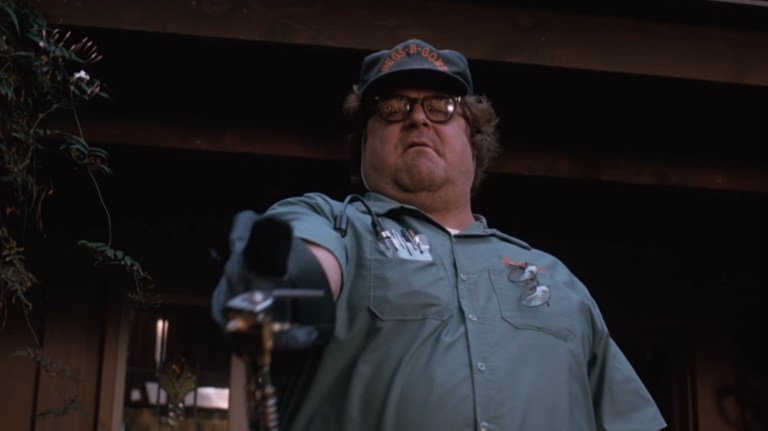
When scientists discover a new and deadly species of spider in a Venezuelan sinkhole, they need to be careful. Unfortunately, their photographer dies and, when they send the body back to his hometown of Canaima, California, one of the spiders stows away inside the coffin. Now Canaima is overrun with killer spiders, and the new town doctor’s arachnophobia–a fear of spiders–isn’t helping anything. If they don’t contain this spider problem, it could spell the end of the world.
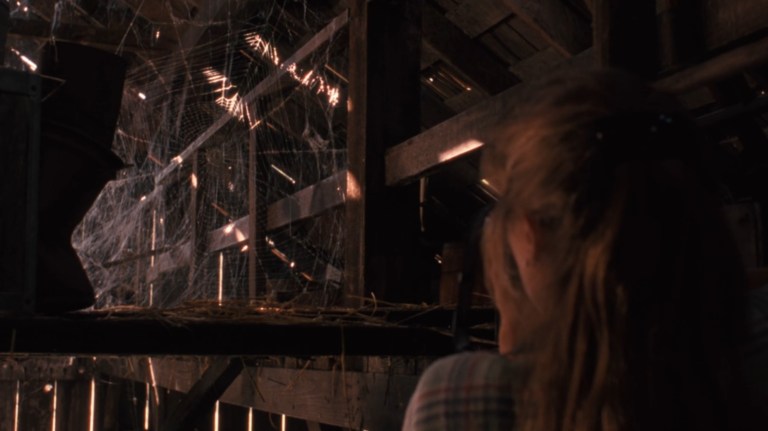
Arachnophobia (1990) was a hit right from the start. Though now over three decades old, generations still look back fondly on this horror comedy creature feature as a ’90s cult classic. Considering they used over 300 real spiders for this spook-fest, you can imagine just how creepy it was behind-the-scenes. Read on for a spoiler-filled look at Arachnophobia trivia and facts.
The Cast and Crew
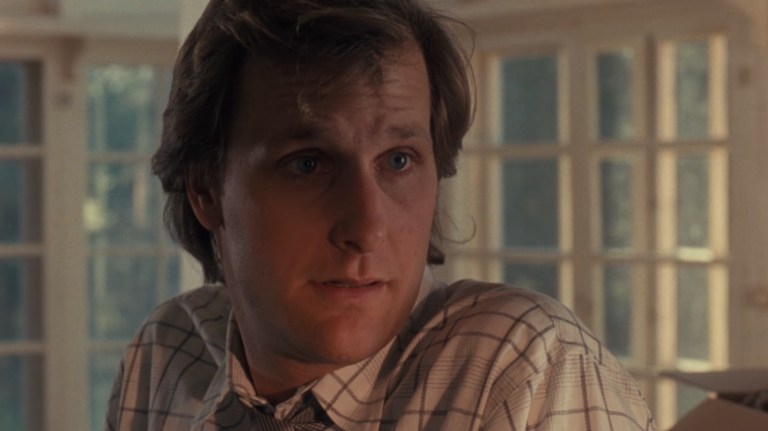
1. Jeff Daniels, as small town doctor Ross Jennings, received top billing for the film. Even so, he doesn’t appear in the movie until 20 minutes in.
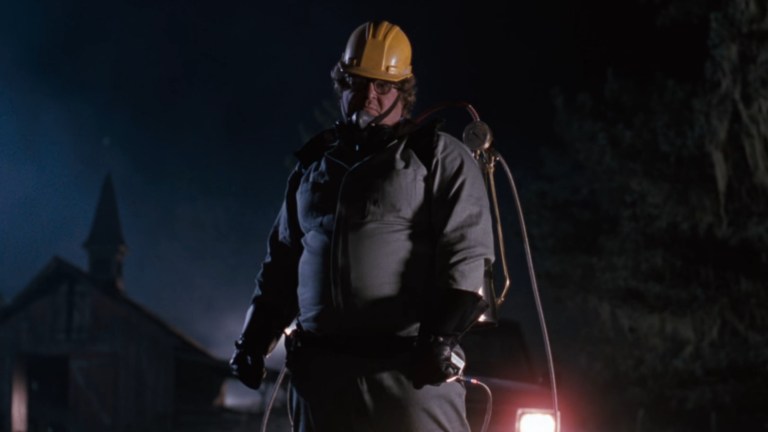
2. John Goodman has Stephen Spielberg to thank for his role in Arachnophobia. In order to executive produce the film, Spielberg had a stipulation that Goodman have a role because he loved working with him on Always (1989). Director Frank Marshall had originally wanted John Candy for the role instead.
3. This was Frank Marshall’s directorial debut. He went on to direct other films including Alive (1993) and Congo (1995).
4. MythBusters alum Jamie Hyneman worked on the film as a special effects technician and created the animatronic spider general for the final scenes of the film. It was one of his very first movies.
Making Arachnophobia
5. The title refers to the actual fear of spiders, which has the same name: Arachnophobia.
6. Since the term “horror comedy” wasn’t as prolific in 1990, advertisers weren’t sure how to market Arachnophobia. They considered it a thriller and comedy, so some ads referred to it as a “thrill-omedy.”
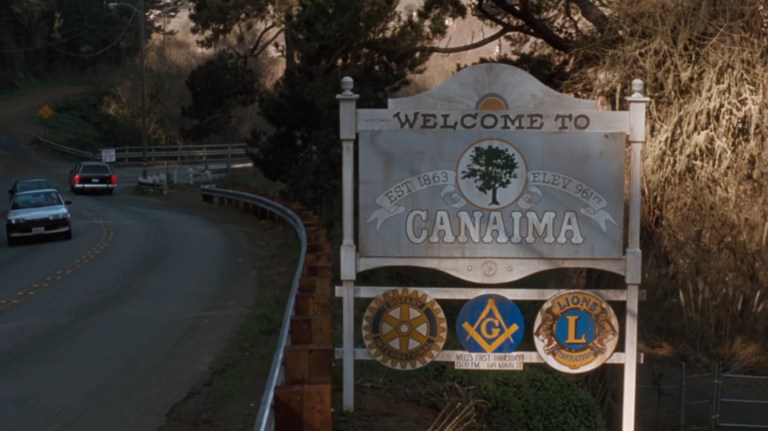
7. The town of Canaima, California doesn’t exist. The fictional town was named after the Guyana Indian avenging spirit and the Venezuelan town near where the beginning of the film was shot.
8. Toward the end of the film, Sheriff Parsons (played by Stuart Pankin) drives away from the Jennings barn toward the mortuary and isn’t seen again. They had actually filmed a scene where he’s attacked by a spider in his cruiser, which he crashes and dies. Unfortunately, these scenes were cut from the film.
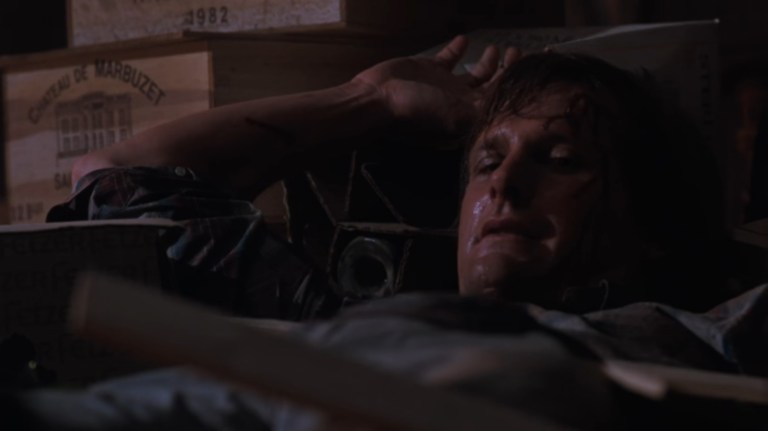
9. The final battle scene in the Jennings cellar took two weeks of 13-hour days to film. Two days of that time were devoted just to Jeff Daniels being pinned under some wine racks. These scenes were the last to be filmed.
10. This was the very first film for production company Hollywood Pictures, a division of Walt Disney Studios. They’d go on to make hits like Encino Man (1992) and While You Were Sleeping (1995). Their biggest hit was The Sixth Sense (1999), but that ultimately didn’t keep the company afloat. They ended up closing in 2007.
Working with Spiders

11. Most of the spiders used in the film were real. They used New Zealand natives: 300 Avondale spiders (Delena cancerides). These spiders were chosen because of their large size, social attitudes, and harmlessness to humans.
12. It wasn’t an easy choice to go with the Avondale spiders. Frank Marshall did tests with a wide range of spiders to make sure they’d behave well and look good in the film. He did what he called the “Spider Olympics,” which tested things like speed and jumping ability.
13. The Avondale spiders were procured from New Zealand but, because of quarantine regulations, they were unable to return to their home country after filming wrapped.
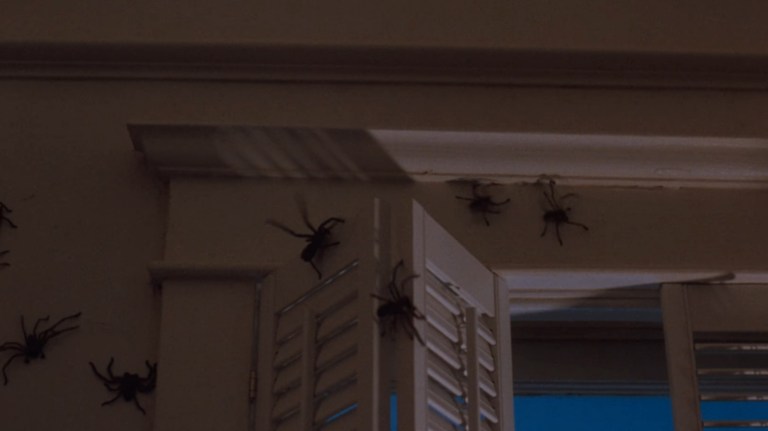
14. The filmmakers were able to get the spiders to move in certain directions by safely blasting them with heat and cold.
15. As you can imagine, it’s difficult to work with animals that can’t really be trained. Jeff Daniels explained what it was like to work with them:
You are basically waiting for the spider to get it right. And when he does, you better be great because that’s the one [take] we are going to use.
Jeff Daniels, Orlando Sentinel
16. Despite how some people feel about spiders, the filmmakers cared about the safety of their 300 real spiders. For the scene where John Goodman’s Delbert sprayed and stomped a spider, they took great care to keep the spider safe. The spray was filled with just water. They used a dummy spider for any super dangerous moments. And, when he steps on the spider, they had him wear a boot with a hollow sole so the spider could hide inside.
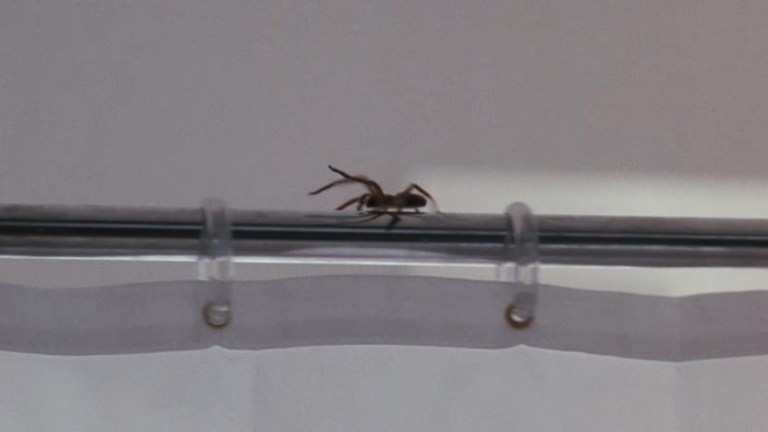
17. During the shower scene, a real spider goes down the drain. However, this wasn’t a real shower drain. The drain was fake and the spider was quickly and easily removed from the water.
18. All dead spiders in the film had died of natural causes.
19. It wasn’t just spiders that were kept safe. Dead animals in webs and the raven that falls dead from the sky were all fake.
20. For the larger living spiders, animal handlers used bird-eating tarantulas. They were used for the scenes of a large spider traveling from the jungle to California. Because they’re more difficult to deal with than the smaller Avondale spiders, the tarantulas were handled by famous entomologist, Steven R. Kutcher.
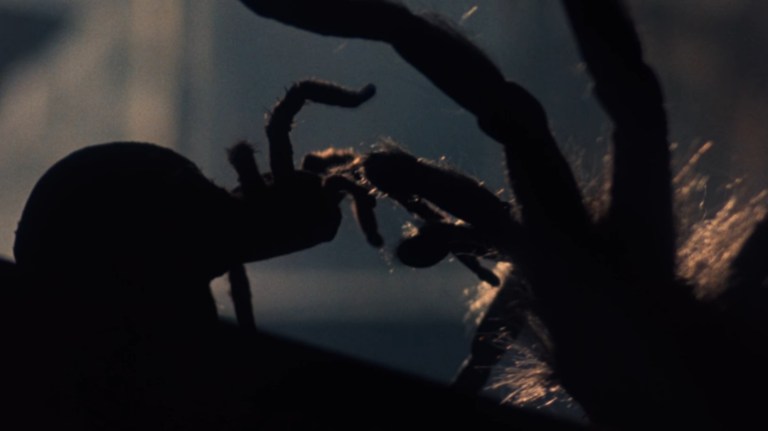
21. Frank Marshall named the bird-eating tarantula “Big Bob” after fellow director, Robert Zemeckis.
22. Not everyone is afraid of spiders. John Goodman said in a featurette for Arachnophobia:
I don’t have any problem. Yeah, we see each other eye to eye; well, two eyes to their 16, but we get along swell.
John Goodman, Arachnophobia Featurette
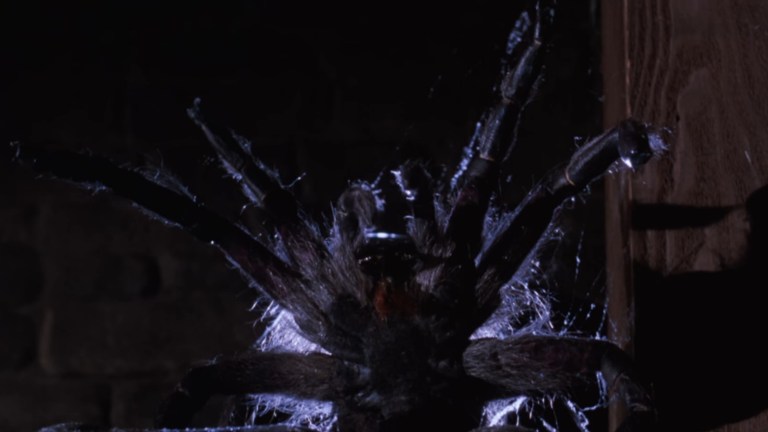
23. Though most of the spiders were real in the film, that wasn’t the case with all of them. The spider general and spider queen were made from articulated models.
24. Did you notice the gross sound when spiders got stepped on? Foley artists–the people who make the sound effects for films–stepped on mustard packets and potato chips to get the signature squish and crunch.
Release, Reception, and a Remake
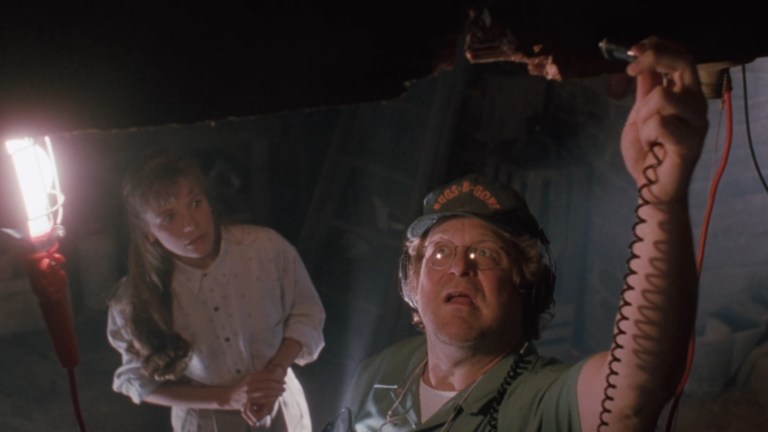
25. Arachnophobia released July 18, 1990 and debuted at third at the box office. It earned $8 million during the opening weekend and $53 million domestically overall. It also earned $30 million in home video rentals. With a budget of $22 millions, this makes it a commercial success.
26. The film was nominated for seven awards and won two: The Saturn Awards for Best Horror Film and Best Actor for Jeff Daniels.
27. There were several tie-ins for the film:
- A 1991 Arachnophobia video game released for DOS, Commodore 64, Amiga, and Amstrad CPC.
- A novelization by author Nicholas Edwards.
- A comic book adaptation released by Hollywood Comics, an imprint of Disney Comics.
28. The original poster art for Arachnophobia featured a spider hanging in silhouette in front of the moon. That spider was absent on VHS and DVD copies of the movie, but reappeared for the Blu-ray release in 2012.
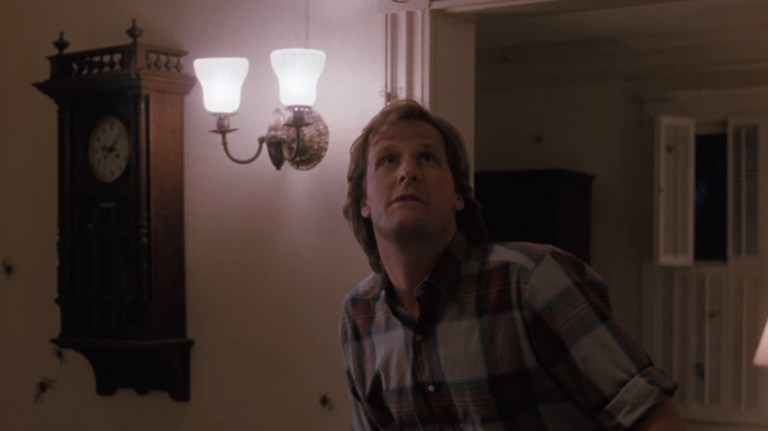
29. Jeff Daniels has now had a parasite named after him thanks to his work on this film. Scientists from the University of California discovered a tarantula-killing worm and called it the “Tarantobelus jeffdanielsi.” Daniels said about the honor:
When I first heard a new species of nematode had been named after me, I thought, ‘Why? Is there a resemblance?’ Honestly, I was honored by their homage to me and Arachnophobia. Made me smile. And of course, in Hollywood, you haven’t really made it until you’ve been recognized by those in the field of parasitology.
Jeff Daniels, UC Riverside News
30. Arachnophobia was highly rated by critics. It has a Rotten Tomatoes rating of 93% with an audience score of 54%.
31. An Arachnophobia remake is currently in production. It’s being written and directed by Christopher Landon, the mind behind Happy Death Day (2017) and Freaky (2020). Frank Marshall, who directed the original, is also on as executive producer.
